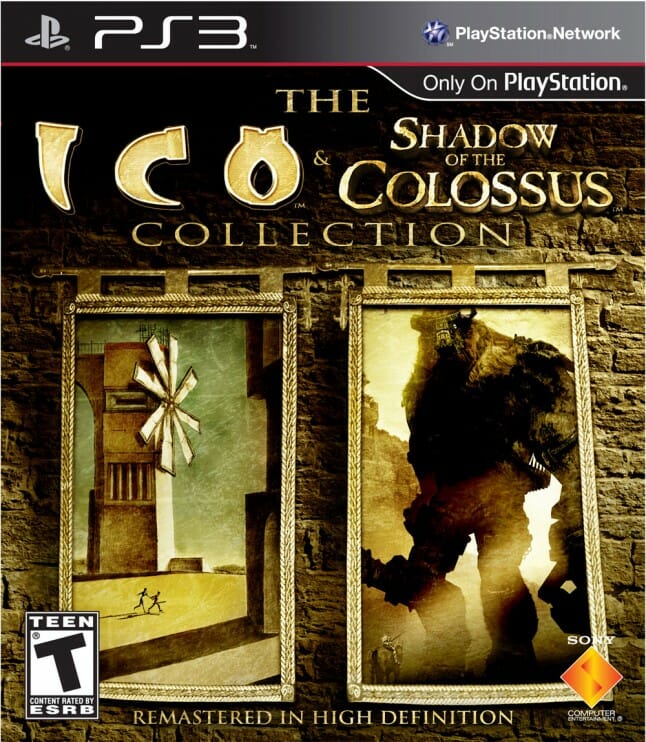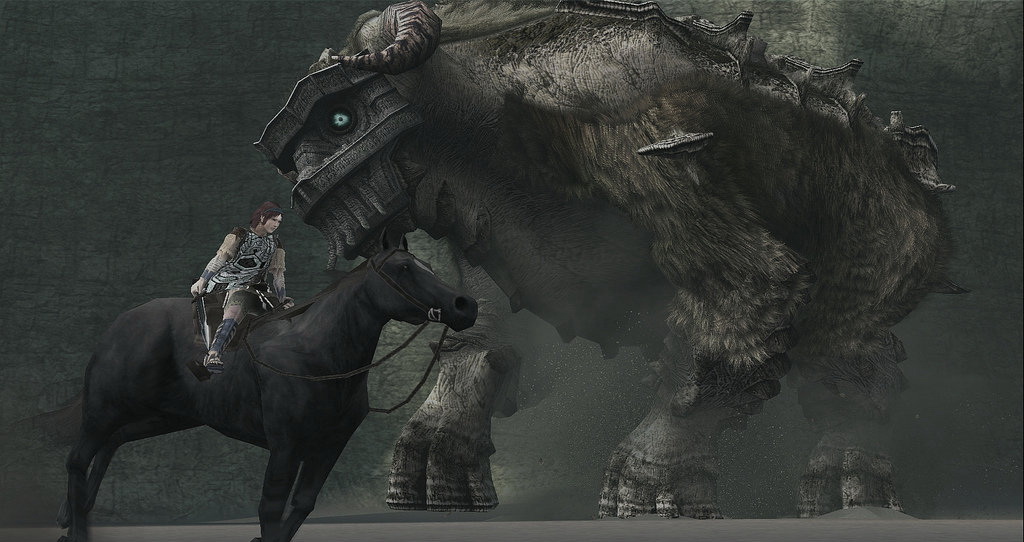The Ico and Shadow of the Colossus Collection (PS3)

December is usually a slow month for new games, so over the next few weeks we’ll look back at notable Fall releases that we haven’t reviewed yet. Today Steve Haske reviews one of the better reissues of the year, the high-definition remake of Team Ico’s Ico and Shadow of the Colossus.
You’ll likely notice there’s something different about Ico the first time you pop this recently redone HD redux in your PS3. The visual plane is wider, with significant improvements to distance and depth, thanks to the benefit of high def textures and improved resolution. The game’s lengthy intro sequence, which depicts the eponymous horned boy’s banishment to the depths of an ethereal castle, is further illuminated by a smooth framerate. Even those intimately familiar with the game may struggle to recall the sheer level of unmasked graphical detail that now improbably graces this decade old PS2 release. It’s like you’re really experiencing Fumito Ueda’s original vision for the first time.
In some ways, you are. The current of nostalgia conjured from Team Ico’s dedicated fanbase runs impossibly strong (Sony fortunately had the foresight to include a reversible Criterion-esque cover to honor this collection’s North American release)—filling in the gaps in memory with the evocative and the obscure present in Ueda’s ouvre is a temptation easily succumbed to. If you’ve played either Ico or Colossus before, you know what I’m talking about. These stories—particularly the latter—have a haunting and timeless presence that lingers long after you’ve completed them, and there are some significant advantages to playing through this collection again on current-gen hardware.
Aesthetically, the visuals have been cleaned up so much (particularly in Ico, whose age creates a particularly striking HD contrast) they could almost pass for modern day PSN releases. Imagine getting your hands on a flawless, original print of, say, The Seven Samurai or Vertigo. Playing Team Ico’s works in HD is tantamount to that sort of sensibility, or at least about as close an approximation as might be had in the still stiflingly youthful medium of video games.

Memory, however, can be a double-edged sword. You may or may not remember Ico and Colossus as 12 to 18 hour adventures in worlds that, despite varying degrees of size, held formidably cerebral challenges. This isn’t entirely the case. A seasoned gamer can reach the end of Ico in a handful of hours. You can finish a speed run in two. Admittedly, I hit a brick wall during my first playthrough several years ago. I don’t claim to remember how or why this happened; regardless I thought I was several hours into a game that you can realistically finish in the time it takes to get through a Call of Duty campaign.
Similarly, you can slay all of Colossus’ 16 beasts in less than five hours if you know what you’re doing. My brain played tricks on me, as in my recollection the quest took far longer. My hazy recollection of my original expectations from both games repeatedly had to be reshaped in one way or another, particularly with Colossus. After the game’s initial 2005 release I plugged the desolate, sweeping feel of its tragic narrative into the gaps in my memory, letting its essence blossom into a deeply-rooted epic in my mind. With little aside from the sound of a hard wind, the voice of a nameless god and the promise of love’s resurrection lying limp on an altar, Colossus remains brooding high fantasy, though the scale of its contemplatively paced legend is more independent than Hollywood.
The announcement of some recent HD collections has left me scratching my head (and subsequently cringing at times after witnessing the borderline results a high definition makeover yields in certain titles). Thankfully, the programmed realities of Ico and Colossus’ years-old designs are rarely disappointing. There are certainly points where gameplay feels a little long in tooth: both Ico and Wander are a bit more finicky to navigate than I previously believed. What I once took as a boy’s natural clumsiness now sticks out, intentionally or not, as a shred of awkward code. Wander’s herky-jerk movements can also make precision a difficult task (it will take some time to master accurately mounting Agro), and ascending or otherwise conquering the massive living platform environments the colossi embody can occasionally devolve from carefully constructed to inelegant. Colossus’ camera sometimes makes life equally difficult. When face to face with a towering creature its frame may skew too low, making it hard to gauge your actions, much less see any of the landscape that you probably need some sense of in order to maneuver and avoid taking damage. You should be prepared to fight the lens’ preferred setup a bit by manually directing its movements.
